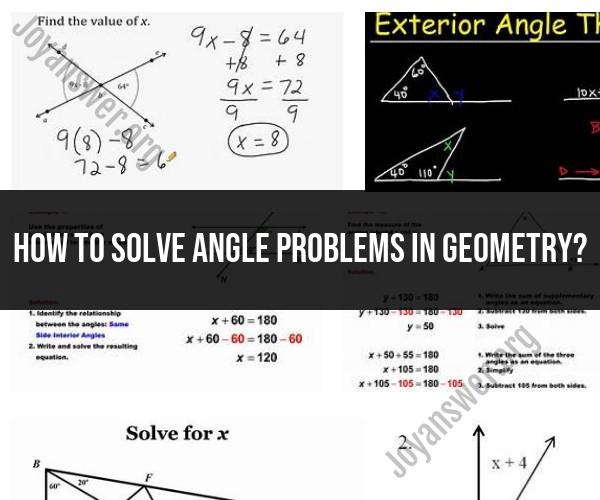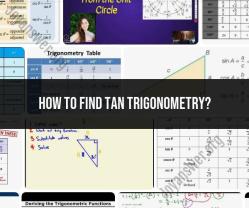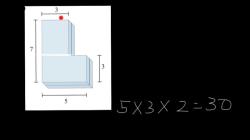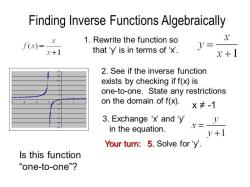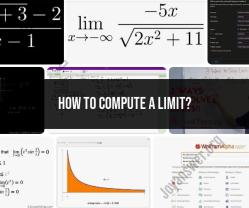How to solve angle problems in geometry?
Solving angle problems in geometry involves applying various strategies and techniques to find the measures of angles in geometric figures. Here are some common approaches to solving angle problems:
Use Angle Sum and Angle Pair Relationships:
- One fundamental concept in geometry is that the angles in many geometric figures add up to a certain value. For example, in a triangle, the sum of all three interior angles is always 180 degrees. In a quadrilateral, the sum of all four interior angles is always 360 degrees. Utilize these angle sum relationships to find missing angles.
Apply the Properties of Parallel Lines and Transversals:
- When dealing with parallel lines intersected by a transversal, you can use the properties of corresponding angles, alternate interior angles, alternate exterior angles, and consecutive interior angles to find angle measures. These properties provide relationships between angles formed by intersecting lines.
Use the Properties of Special Triangles:
- Special triangles like right triangles (with a 90-degree angle) and isosceles triangles (with two congruent sides and angles) have unique angle relationships that can be used to find angle measures. For example, in a right triangle, the sum of the two acute angles is always 90 degrees.
Apply the Pythagorean Theorem:
- In right triangles, you can use the Pythagorean Theorem (a^2 + b^2 = c^2) to find missing side lengths, and then use trigonometric functions like sine, cosine, and tangent to find angle measures.
Use Exterior Angle Theorem:
- The Exterior Angle Theorem states that the measure of an exterior angle of a triangle is equal to the sum of the measures of the two non-adjacent interior angles. This theorem can be used to find missing angles in triangles.
Apply Congruence and Similarity Theorems:
- Congruence and similarity theorems provide relationships between corresponding angles in congruent or similar figures. Use these theorems to find angle measures in similar triangles or congruent polygons.
Employ Angle Bisectors:
- Angle bisectors divide an angle into two congruent angles. You can use angle bisectors to find missing angle measures by setting up equations based on the bisected angles.
Use Trigonometry:
- Trigonometric functions (sine, cosine, tangent) can be applied to find angle measures and side lengths in various geometric contexts. Trigonometry is particularly useful in solving problems involving right triangles and angles of elevation and depression.
Draw Diagrams and Label Angles:
- Sometimes, simply drawing a clear and accurate diagram of the geometric figure can help you visualize angle relationships and identify the angles you need to find. Label angles and sides in your diagram to keep track of your work.
Practice with Angle Problems:
- The more you practice solving angle problems, the better you'll become at recognizing patterns and applying the appropriate strategies. Work through a variety of problems to build your geometry skills.
Remember that geometry problems often require logical reasoning and careful application of geometric principles. Read the problem statement carefully, draw diagrams if needed, and use the appropriate techniques to solve for the missing angles.
